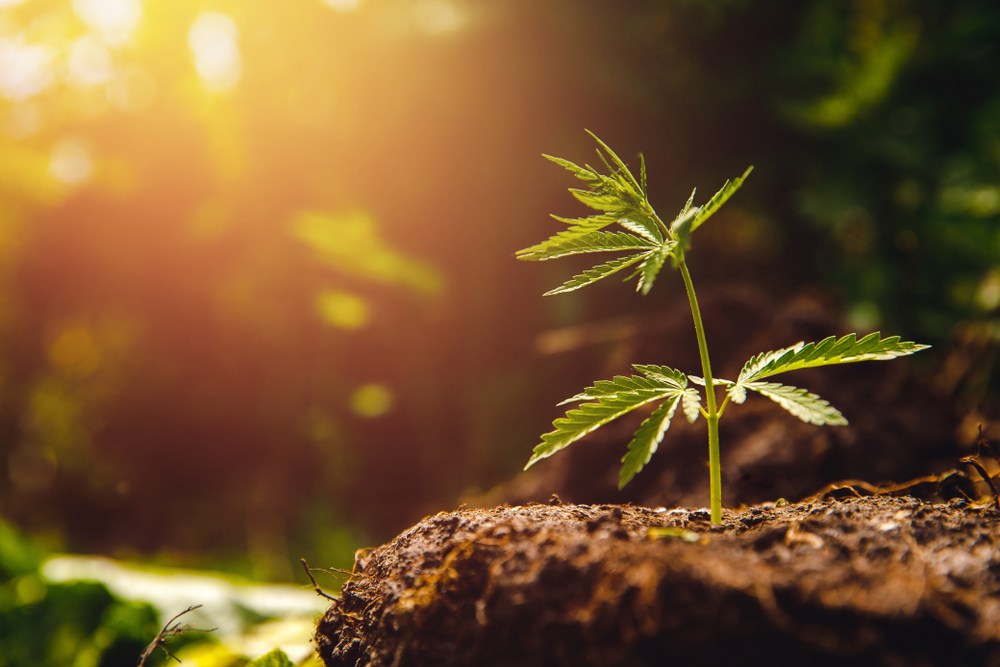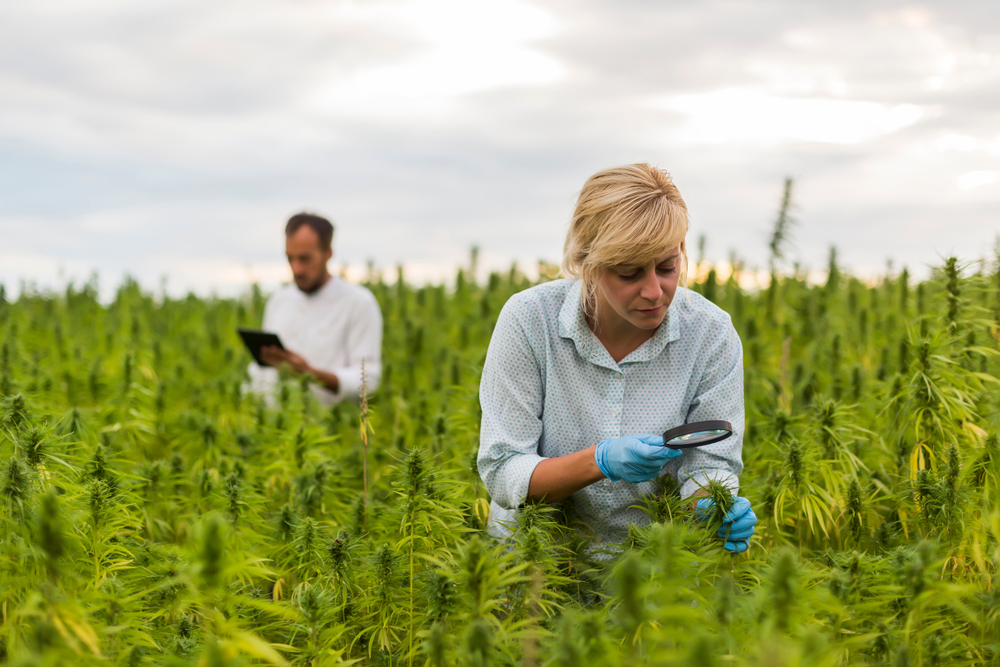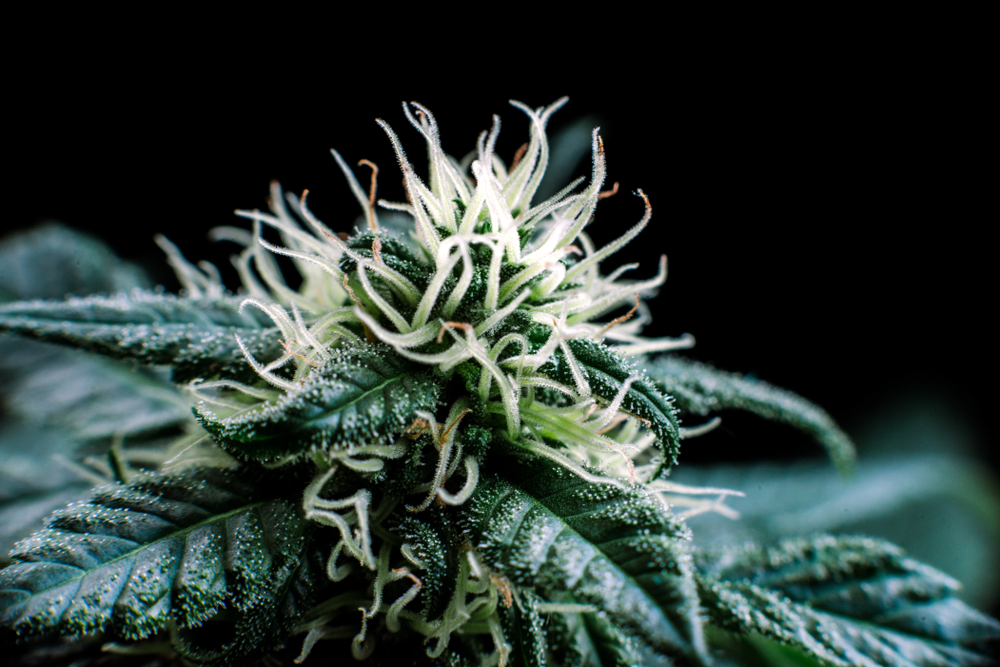Table of Contents
Introduction
CBDV (Cannabidivarin) is a fascinating cannabinoid compound that has garnered significant attention in recent years. Similar to CBD (Cannabidiol), CBDV is found in cannabis plants, but it possesses distinct properties and potential therapeutic applications.
As our understanding of cannabinoids expands, CBDV has emerged as a promising area of research and exploration.
The endocannabinoid system of the body, a complex network of receptors and chemicals involved in regulating a variety of physiological functions, is affected by CBDV. CBDV is believed to interact with cannabinoid receptors, notably CB1 and CB2 receptors, even though its binding affinity and effects may be different from those of other cannabinoids. The exact mechanisms of action of CBDV are still unknown.

A brief explanation of CBDV’s chemical structure
CBDV (Cannabidivarin) possesses an intriguing chemical structure that sets it apart from other cannabinoids. While structurally similar to CBD (Cannabidiol), CBDV has a variation in its molecular composition that distinguishes it. It consists of a pentyl side chain, which is one carbon atom longer than the propyl side chain found in CBD.
This subtle alteration in its chemical structure may contribute to CBDV’s unique properties and potential therapeutic effects. By understanding CBDV’s distinct molecular arrangement, researchers can delve deeper into its interactions with the body’s receptors and pathways, paving the way for innovative applications in the field of cannabis-based medicine.
CBDV is classified as a phytocannabinoid, meaning it is a naturally occurring compound found in plants. Specifically, it is one of the many cannabinoids present in cannabis plants. Phytocannabinoids are known for their interactions with the body’s endocannabinoid system, influencing various physiological processes. CBDV’s classification as a phytocannabinoid highlights its botanical origin and its potential therapeutic significance in the realm of cannabis-based medicine.
Historical Background and Discovery of CBDV
The historical background and discovery of CBDV (Cannabidivarin) can be traced back to the exploration and scientific investigation of cannabis plants. As early as ancient times, cannabis was utilized for its various medicinal properties in different cultures around the world.
However, the specific identification and discovery of CBDV as a distinct cannabinoid came about through modern scientific research. In the mid-20th century, scientists began unraveling the complex chemical composition of cannabis, leading to the discovery of different cannabinoids present in the plant.
CBDV was first isolated and characterized in the 1960s and 1970s. Through advancements in analytical techniques, researchers were able to separate and identify individual cannabinoids from the complex mixture of compounds in cannabis. This breakthrough allowed them to distinguish CBDV from other cannabinoids like THC and CBD.
Since its discovery, CBDV has garnered increasing interest due to its potential therapeutic properties.
Extraction and Sources of CBDV
Modern extraction techniques for isolating CBDV (Cannabidivarin) now offer precise and effective procedures for getting high-quality CBDV extracts from cannabis plants. These methods prioritize purity, yield, and safety, ensuring that the extracted CBDV is suitable for various applications, including research and product development.
One commonly employed extraction method is solvent extraction. This approach involves using solvents such as ethanol or supercritical CO2 to dissolve CBDV and other cannabinoids from the plant material. The solvent is applied to the cannabis biomass, allowing it to penetrate and extract the desired compounds. Afterward, the solution is processed to remove impurities, resulting in a CBDV-rich extract. Solvent extraction is widely utilized due to its versatility, scalability, and ability to yield relatively high concentrations of CBDV.
As a reliable and effective technique for CBDV isolation, supercritical CO2 extraction has grown in popularity. In this method, carbon dioxide is heated to a certain temperature and pressure, which causes it to become supercritical. In this condition, CO2 functions as both a gas and a liquid, efficiently extracting CBDV while displacing undesirable substances. High-purity CBDV extracts are produced by the method, which is accurate and enables fine-tuning of the extraction parameters.
Chromatography, a technique commonly used in analytical laboratories, has also found its place in CBDV extraction. This method involves separating cannabinoids based on their molecular properties using specialized columns. Bypassing the CBDV-rich solution through the column, CBDV is isolated and collected, yielding highly pure extracts. Chromatography offers excellent control over the separation process, enabling the isolation of specific cannabinoids, including CBDV, from complex mixtures.

Modern extraction methods are often supported by advanced equipment designed specifically for cannabis extraction processes. For example, rotary evaporators and centrifuges are utilized to remove solvents and unwanted substances, leaving behind concentrated CBDV extracts. These technologies enhance extraction efficiency and ensure the final product meets stringent quality standards.
As the cannabis industry continues to evolve, researchers and extraction professionals strive to refine and innovate extraction techniques further. They aim to maximize CBDV yield, enhance purity, and optimize the overall efficiency of the extraction process. Additionally, adherence to regulatory guidelines and safety protocols is of paramount importance to ensure the production of safe and compliant CBDV extracts.
In conclusion, modern extraction methods have revolutionized CBDV isolation, offering efficient, precise, and safe techniques for obtaining high-quality extracts. Solvent extraction, supercritical CO2 extraction, chromatography, and advanced extraction equipment contribute to the successful extraction of CBDV from cannabis plants. These advancements play a crucial role in supporting research, product development, and the availability of pure and reliable CBDV extracts in the market.
Pharmacokinetics and Metabolism of CBDV
CBDV (Cannabidivarin), exhibits a range of pharmacological effects and holds promising therapeutic potential. Here are some key points highlighting its pharmacological effects and therapeutic applications:
Anticonvulsant properties: CBDV has demonstrated anticonvulsant effects in preclinical studies, suggesting its potential as a treatment for epilepsy and seizure disorders. It has shown promise in reducing seizure frequency and severity.
Potential for pain management: CBDV exhibits analgesic properties, making it a candidate for managing chronic pain conditions. It may modulate pain pathways and alleviate pain symptoms, although further research is needed to understand its mechanisms fully.
Anti-inflammatory effects: CBDV has been found to possess anti-inflammatory properties. It may help mitigate inflammation and associated symptoms in conditions such as arthritis, multiple sclerosis, and inflammatory bowel disease.
Neuroprotective potential: Preclinical studies indicate that CBDV may have neuroprotective properties, potentially offering benefits in the treatment of neurodegenerative disorders like Parkinson’s disease and Alzheimer’s disease. It may help protect neurons and prevent neurodegeneration.
Anti-nausea and antiemetic effects: CBDV has shown promise in alleviating nausea and vomiting, making it a potential treatment for chemotherapy-induced nausea and other gastrointestinal disorders.
Potential for psychiatric disorders: Emerging research suggests that CBDV may have therapeutic applications in psychiatric disorders such as anxiety, depression, and schizophrenia. It may modulate neurotransmitter systems involved in mood regulation and cognitive function.
Antioxidant properties: CBDV exhibits antioxidant effects, which may help reduce oxidative stress and promote overall cellular health. This antioxidant activity may contribute to its potential benefits in various conditions associated with oxidative damage.
Gastrointestinal effects: CBDV has been studied for its potential effects on gut health and gastrointestinal disorders such as inflammatory bowel disease. It may help regulate gut motility and reduce inflammation in the digestive tract.
These pharmacological effects of CBDV highlight its diverse therapeutic potential across a range of medical conditions. However, further research, including clinical trials, is necessary to fully understand its mechanisms of action, optimal dosing, and long-term effects in humans.

Potential therapeutic applications of CBDV
CBDV (Cannabidivarin) shows promise as a therapeutic compound with potential applications in various medical conditions. While research is still evolving, preliminary studies suggest several potential therapeutic uses of CBDV. One area of interest is epilepsy and seizure disorders, as CBDV has demonstrated anticonvulsant properties and may help reduce seizure frequency and severity. Additionally, CBDV may hold potential in the treatment of autism spectrum disorders (ASD), as it has shown promise in improving social interaction, reducing repetitive behaviors, and alleviating the anxiety associated with ASD.
Another therapeutic application of CBDV could be in pain management, as it exhibits analgesic properties and may help alleviate chronic pain. Furthermore, CBDV’s anti-inflammatory effects may make it beneficial for conditions such as arthritis and multiple sclerosis. Other potential therapeutic uses of CBDV include its neuroprotective properties, potential as an antiemetic for nausea and vomiting, and its potential for psychiatric disorders such as anxiety and depression.
While more research is needed to fully understand the mechanisms and effectiveness of CBDV in these applications, its therapeutic potential offers hope for patients seeking alternative treatment options.
Absorption, distribution, metabolism, and excretion (ADME) of CBDV in the body
When CBDV (Cannabidivarin) is consumed, it undergoes a series of processes known as absorption, distribution, metabolism, and excretion (ADME) within the body. Upon ingestion or administration, CBDV is absorbed through various routes, such as the gastrointestinal tract or respiratory system, and enters the bloodstream.
From there, it is distributed throughout the body, reaching target tissues and organs. CBDV is metabolized by enzymes in the liver, primarily through the cytochrome P450 system, where it undergoes chemical transformations to produce metabolites. These metabolites are then eliminated from the body through the kidneys in the form of urine or through bile in feces. The exact ADME profile of CBDV is still being investigated, and factors such as individual variations, dosage, and route of administration may influence its absorption, metabolism, and excretion.
Understanding the ADME characteristics of CBDV is crucial for determining optimal dosing regimens and assessing its safety and efficacy in therapeutic applications. Further research is needed to comprehensively elucidate the ADME processes of CBDV and its potential interactions with other medications.
Factors influencing the pharmacokinetics of CBDV
The pharmacokinetics of CBDV (Cannabidivarin) is influenced by various factors that can impact its absorption, distribution, metabolism, and excretion within the body. Some key factors include the route of administration, dosage, individual variations, and potential drug interactions.
The route of administration determines how CBDV enters the body, with oral ingestion and inhalation being common methods. The dosage of CBDV can affect its bioavailability and therapeutic effects. Individual variations such as age, body weight, metabolism, and overall health can influence how the body processes CBDV.
Additionally, CBDV may interact with other medications, potentially affecting its pharmacokinetics. These factors highlight the need for personalized dosing and careful consideration of potential drug interactions when using CBDV as a therapeutic agent. Further research is necessary to fully understand and optimize the pharmacokinetics of CBDV for safe and effective use in medical applications.
Pharmacological Effects and Therapeutic Potential
CBDV (Cannabidivarin) exhibits a range of pharmacological effects and holds promising therapeutic potential. It interacts with the endocannabinoid system in the body, influencing various physiological processes. Some of the pharmacological effects of CBDV include anticonvulsant, anti-inflammatory, analgesic, neuroprotective, and antiemetic properties. These effects suggest potential therapeutic applications in conditions such as epilepsy, chronic pain, inflammation-related disorders, neurodegenerative diseases, and chemotherapy-induced nausea and vomiting.
Furthermore, CBDV shows potential in managing psychiatric disorders like anxiety and autism spectrum disorders. However, further research, including clinical trials, is necessary to fully understand the mechanisms of action and confirm the therapeutic efficacy of CBDV in different medical conditions.
The evolving body of evidence highlights CBDV’s potential as a valuable therapeutic compound and underscores the need for continued research to unlock its full therapeutic potential.
Examination of CBDV’s Impact on mood disorders and anxiety regulation
CBDV (Cannabidivarin) has garnered attention for its potential therapeutic effects on mood disorders and anxiety regulation. While research in this area is still limited, preliminary findings suggest that CBDV may offer promise as a natural alternative for managing these conditions.
Mood Disorders
Studies have indicated that CBDV may have mood-stabilizing properties. It has been found to interact with serotonin receptors, which play a crucial role in mood regulation. By modulating serotonin levels in the brain, CBDV may potentially alleviate symptoms associated with mood disorders such as depression and bipolar disorder. However, more extensive research, including clinical trials, is needed to fully understand the mechanisms underlying CBDV’s impact on mood disorders.

Anxiety Regulation
CBDV has also shown potential in modulating anxiety-related behaviors. Preclinical studies have demonstrated that CBDV may reduce anxiety-like behaviors in animal models. This effect is believed to be mediated through its interaction with the endocannabinoid system, particularly by targeting receptors involved in anxiety regulation. While these findings are promising, further research is required to determine the optimal dosage, duration, and long-term effects of CBDV on anxiety in humans.
It is worth noting that CBDV’s impact on mood disorders and anxiety regulation may differ from person to person. Factors such as individual biochemistry, dosage, and method of administration can influence its effectiveness. Therefore, personalized treatment plans and close monitoring are essential to assess the efficacy of CBDV for each individual.
Moreover, CBDV is often used in combination with other cannabinoids, such as CBD, to potentially enhance its therapeutic effects. The synergistic interaction between different cannabinoids, known as the entourage effect, may contribute to a more comprehensive and effective approach to managing mood disorders and anxiety.
Despite the promising potential, it is important to exercise caution when considering CBDV for mood disorders and anxiety regulation. Currently, there is limited regulatory oversight, and the market is flooded with products of varying quality and consistency. It is crucial to choose reputable manufacturers and ensure that products undergo rigorous testing for purity and potency.
Furthermore, individuals with underlying mental health conditions should consult with a healthcare professional before incorporating CBDV into their treatment regimen. This ensures that CBDV is used safely and appropriately, considering potential interactions with existing medications and individual health circumstances.
Safety Profile and Adverse Effects
CBDV (Cannabidivarin) is a cannabinoid that has gained attention for its potential therapeutic benefits. While it is generally considered safe, it is important to understand the potential side effects and safety considerations associated with CBDV use. Here is an overview of the safety profile of CBDV:
Safety Profile: CBDV has been studied in both preclinical and clinical settings, and the available evidence suggests that it has a favorable safety profile. It is considered well-tolerated, with a low risk of adverse effects. However, it is worth noting that more research is needed to fully understand its long-term safety and potential interactions with other medications.
Non-intoxicating: Like CBD, CBDV is non-intoxicating, meaning it does not produce the psychoactive effects commonly associated with THC. This makes CBDV a potentially attractive option for individuals seeking therapeutic benefits without the mind-altering effects.
Side Effects: The reported side effects of CBDV are generally mild and infrequent. Some individuals may experience drowsiness, dry mouth, or changes in appetite. These effects are usually temporary and resolve on their own. It is important to note that the occurrence and severity of side effects may vary depending on individual factors such as dosage, route of administration, and overall health.
Drug Interactions: CBDV may interact with certain medications, particularly those metabolized by liver enzymes such as the cytochrome P450 system. It is advisable to consult with a healthcare professional before using CBDV, especially if you are taking any prescription medications, to ensure there are no potential interactions that could affect the effectiveness or safety of your medication regimen.
Safety Considerations: While CBDV is generally well-tolerated, it is important to exercise caution and follow recommended guidelines. Start with a low dosage and gradually increase it as needed while monitoring your body’s response. It is also essential to choose high-quality CBDV products from reputable sources to ensure purity and potency.
Lack of Regulatory Oversight: It is worth noting that CBDV falls into a regulatory gray area in many jurisdictions. As a result, the market is flooded with products of varying quality and consistency. It is crucial to do thorough research and choose reputable manufacturers that adhere to strict quality control standards.
Individual Sensitivity: Just like any supplement or medication, individual sensitivity and response to CBDV may vary. Some individuals may be more susceptible to side effects or may require lower doses for desired effects. It is essential to listen to your body and adjust your usage accordingly.

Conclusion
CBDV (Cannabidivarin) is a cannabinoid that has gained attention for its potential therapeutic benefits. While research on CBDV is still in its early stages, it shows promise in various areas of health and wellness. CBDV has demonstrated potential in managing conditions such as epilepsy, mood disorders, anxiety, and other neurological disorders. It interacts with the endocannabinoid system in the body, modulating various physiological processes and exhibiting a range of pharmacological effects. CBDV is generally considered safe, with a low risk of adverse effects, but more research is needed to fully understand its long-term safety and potential interactions with medications.
As with any cannabinoid or natural supplement, it is important to exercise caution and choose reputable sources for CBDV products. The market currently lacks regulatory oversight, and quality and consistency can vary. Selecting high-quality CBDV products from reputable manufacturers ensures purity and potency.
While CBDV shows promise, further research, including well-designed clinical trials, is needed to establish its efficacy, optimal dosing, and long-term effects. The scientific community is actively exploring the potential of CBDV, and ongoing studies will contribute to a more comprehensive understanding of its therapeutic potential.
It is essential to consult with a healthcare professional before incorporating CBDV into a treatment regimen, especially for individuals with underlying health conditions or those taking medications. Healthcare professionals can provide personalized guidance and monitor the effects of CBDV in specific circumstances.
Overall, CBDV represents an exciting area of research with potential therapeutic applications. As the scientific community continues to explore its properties and mechanisms of action, we can expect to gain further insights into its efficacy and safety. With careful consideration, CBDV may offer a natural and alternative approach to improving health and well-being for individuals seeking potential therapeutic benefits.





